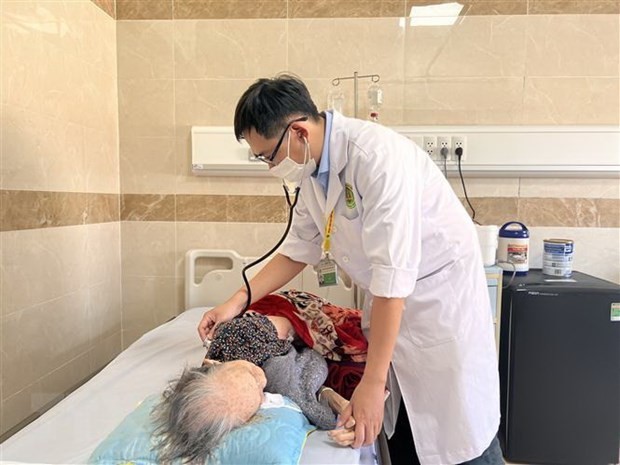 |
An elderly with heart problems receives medical examination and treatment at hospital. (Photo: VNA) |
The conference saw the attendance of leading medical experts from the two countries, who discussed the current situation, challenges, control strategies, and management of NCDs in three plenary sessions and four thematic sessions about cardiology, stroke, diabetes, and respiratory.
According to Dr. Tokuaki Shobayashi, who is a former health official of Japan and now a health policy advisor to Vietnam's Ministry of Health, although Japan is becoming an aging society, it still maintains the highest average life expectancy and healthy life expectancy in the world.
Japan's national health improvement campaign has been carried out successfully, and health is one of the biggest concerns for many Japanese citizens, he said, adding that besides the Government, corporations also have played a role in improving people's health.
Dr. Tran Quoc Bao from the Department of Preventive Medicine under the Vietnamese Ministry of Health said the burden of NCDs is very hue. NCDs cause about 80 percent of deaths in Vietnam and 41 percent of deaths occurred before the age of 70. The leading causes of death are cardiovascular disease, cancers, chronic obstructive pulmonary disease, and diabetes.
The number of people infected with non-communicable diseases is very large, estimated at over 20 million cases. The rate of hypertension and diabetes has tended to increase over the past ten years, he said.
According to the official, factors leading to high levels of NCDs are smoking, drinking alcohol, eating vegetables and fruits insufficiently, eating too much salt, and lack of physical activity. The rate of overweight and obesity has increased rapidly, on average, nearly 1 percent per year. Dyslipidemia has tended to rise in both men and women in Vietnam.
Associate Professor Dr. Vu Thi Thanh Huyen, a lecturer from Hanoi Medical University, said that NCDs like stroke, cancers, and mental depression are usually found among elderly people. Medical costs for the elderly are 7-10 times higher than for the younger people.
She suggested that there should be studies to assess the healthcare needs of the elderly, gradually develop the geriatric network system, and have preferential policies to encourage businesses to take care of the elderly.
























